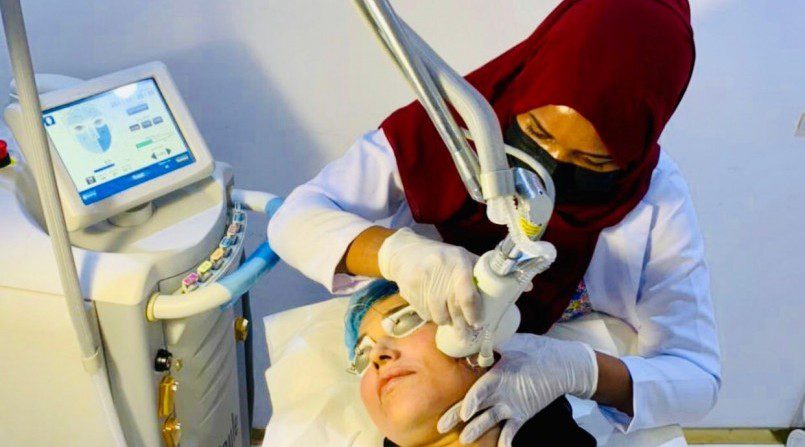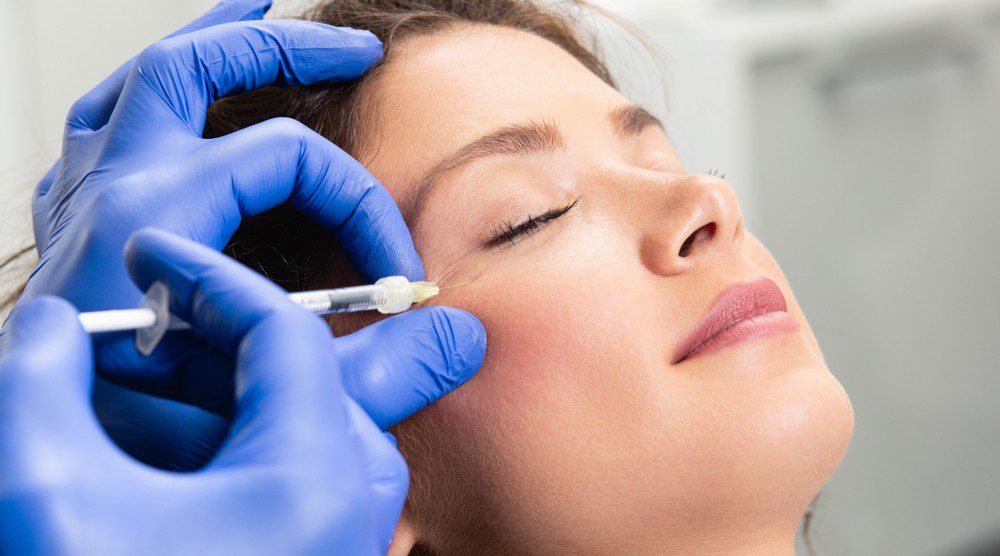STDs - Diagnosis and treatment

Sexually Transmitted Diseases (STDs) are infections that spread primarily through sexual contact. They may afflict individuals of all ages and backgrounds and can be caused by bacteria, viruses, or parasites. With timely identification and accurate treatment executions, some STDs (sexually transmitted diseases) can be fully cured, while others can be effectively managed.
At SKIN111, we fully understand that concerns and obligations about sexually transmitted diseases can lead to uncertainty and anxiety. Our goal is to provide discreet, accurate STD testing, fast results, and personalized STD treatment at home or in a safe, confidential, and non-judgmental environment.
What Is STD Testing?
STD testing is the process used to detect sexually transmitted diseases (STDs) and sexually transmitted infections (STIs) such as chlamydia, gonorrhea, syphilis, HIV, herpes, hepatitis B and C, human papillomavirus (HPV), and other common infections. These tests are essential, as many STDs can be asymptomatic, allowing you to carry and transmit the infection without showing any signs or symptoms.
Regular STD screenings are important for anyone who is sexually active, especially if you have multiple partners, engage in unprotected sex, or are unsure of a partner’s sexual health status. Early detection through STD testing not only ensures timely STD treatment and better health outcomes, but it also helps prevent serious complications such as infertility, organ damage, and increased risk of other infections.
At SKIN111, we provide discreet, accurate, and confidential STD testing with fast results and professional guidance, ensuring you receive the right STD disease treatment if required.
How Are STD Tests Done?
How STD tests are done depends on the type of infection suspected, and at SKIN111, we follow strict medical protocols to ensure accuracy and confidentiality.
- Blood tests - Commonly used for detecting HIV, syphilis, and hepatitis.
- Urine samples - Often used for diagnosing chlamydia and gonorrhea.
- Physical examination - Performed when there are visible symptoms such as sores, rashes, or lesions.
In general, viral STD tests are most often carried out using blood samples, while bacterial STD tests are typically done using urine samples. All samples at SKIN111 are collected and handled by DHA-licensed, registered nurses under the guidance of experienced physicians.
We are committed to providing the fastest and most accurate STD test results possible, delivering reports within standard turnaround times. Our service is always discreet, professional, and focused on making you feel comfortable and informed at every step.
Understanding STD Diagnosis
Sexually Transmitted Diseases (STDs) diagnosis is made by combining your test results with your medical history and any symptoms you may have. Some infections show signs quickly, while others can remain silent for months or even years, while some may not show symptoms at all. That being tricky, the reason why we recommend regular screening as essential, even if you feel healthy, is to make sure all possible risks are ruled out and you can enjoy your life with peace of mind.
Early detection allows for prompt STD disease treatment and medical resolutions, helping prevent complications such as infertility, organ damage, and, most critically, any possible transmissions to others.
STD Treatment Options
STD treatments and treatment protocols vary depending on the type of infection and the pathogen responsible for the sexually transmitted disease (STD) or sexually transmitted infection (STI). Accurate diagnosis through STD testing is essential before starting any treatment to ensure the best medical outcome.
- Bacterial STDs – Infections such as chlamydia, gonorrhea, and syphilis are typically cured with targeted antibiotic therapy.
- Viral STDs – Conditions such as HIV, herpes simplex virus (HSV), and hepatitis B cannot be cured, but antiviral medications can control symptoms, reduce the frequency of flare-ups, and lower the risk of transmission.
- Parasitic STDs – Infections like trichomoniasis and pubic lice are treated with specific antiparasitic medications to eliminate the parasites and prevent recurrence.
- Fungal STDs – Fungal infections, including yeast infections and candida, can affect the genital area and are treated with antifungal medications (oral, topical, or both) to relieve symptoms and clear the infection.
At SKIN111, all STD treatment advice and prescriptions are FREE and are based on a confirmed diagnosis and are tailored to your individual concerns. Our DHA-licensed physicians and nurses follow evidence-based STD disease treatment protocols to ensure effective results, minimize side effects, and protect your long-term sexual health. We combine medical expertise with confidentiality and compassionate care, delivering the highest standard of services.
Can STDs Be Cured?
Some sexually transmitted diseases (STDs) can be completely cured with accurate and early diagnosis and the accurate STD treatment advice. Especially bacterial STDs such as chlamydia, gonorrhea, and syphilis, as well as parasitic infections like trichomoniasis and pubic lice, can be effectively treated and cured. Prompt treatment with targeted antibiotics or antiparasitic medications can eliminate these infections entirely.
Other STDs, like HIV, herpes simplex virus (HSV), hepatitis B, and certain viral STDs, cannot be cured. However, with proper antiviral treatment and regular medical follow-up, these conditions can be managed effectively, reducing symptoms, preventing flare-ups, lowering the risk of transmission, and allowing you to live a healthy, active life. The earlier you undergo STD testing and begin STD treatments, the better your chances of achieving a full recovery or maintaining long-term control of the infection.
What Is the Best Treatment for STDs?
The best treatment for sexually transmitted diseases (STDs) relies on the pathogen originated. The spread, the expression of the infection, and the mode of treatments matter thereafter.
- The type of infection
- How early it is detected
- Your overall health
Bacterial STDs like chlamydia, gonorrhea, and syphilis are treated with antibiotics; viral STDs such as HIV, herpes, and hepatitis B are managed with antiviral therapy; and parasitic or fungal infections like trichomoniasis, pubic lice, and yeast infections are treated with targeted antiparasitic or antifungal medications.
At SKIN111, we provide personalized STD treatment plans to ensure the most effective and confidential care.
How to Prevent STDs?
At SKIN111, we believe that prevention is the best cure. While STD treatment protocols can be effective, preventing sexually transmitted diseases (STDs) is the best way to protect your long-term sexual health. Hence SKIN111, we always recommend that being informed about your health indexes can always lead to intelligent health and safety decision-making for you and your loved one’s well-being.
- Practice safe sexual activities with protective measures.
- Limit the number of sexual partners to reduce exposure risk.
- Get vaccinated for preventable infections such as HPV and hepatitis B.
- Schedule regular STD screenings at SKIN111, especially if you are sexually active with new or multiple partners.
- Communicate openly with your partner(s) about sexual health and testing history.
- Taking proactive steps can help you avoid infections altogether and reduce the need for future STD disease treatment.
Conclusion
Sexually Transmitted Diseases (STDs) are infections spread primarily and commonly via sexual contact. In this context, the most important step is timely STD testing and professional medical care.
Early and accurate diagnosis allows for timely decision-making and access to guidance for effective STD treatment, whether that means curing bacterial STDs like chlamydia, gonorrhea, and syphilis; treating parasitic infections such as trichomoniasis and pubic lice, managing viral STDs like HIV, herpes, and hepatitis B; or addressing fungal infections such as candida and yeast infections.
At SKIN111, we are committed to confidential STD consultations, discreet and accurate testing, and personalized STD disease treatment advice and prescriptions designed to protect your health and well-being. Most significantly at SKIN111, our DHA-licensed medical team ensures the highest standards of care in a supportive, judgment-free environment, with after-test care provided with expert guidance completely free.
Most Popular:
-

Sciton HALO vs Sciton BBL
Read More »September 20, 2022 -

What is profhilo, and how is it different from fillers?
Read More »September 20, 2022 -

Body contour solutions from SKIN111
Read More »September 20, 2022 -

Does IV GLUTATHIONE therapy work
Read More »September 20, 2022 -

How can an IV drip help you boost your energy
Read More »September 20, 2022